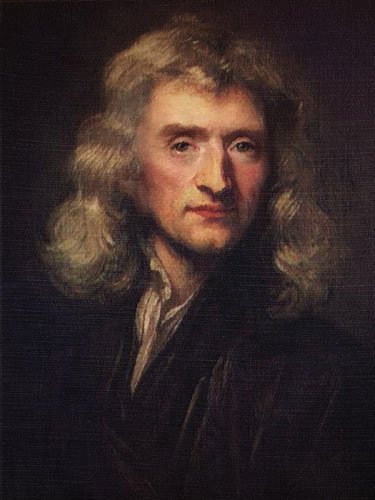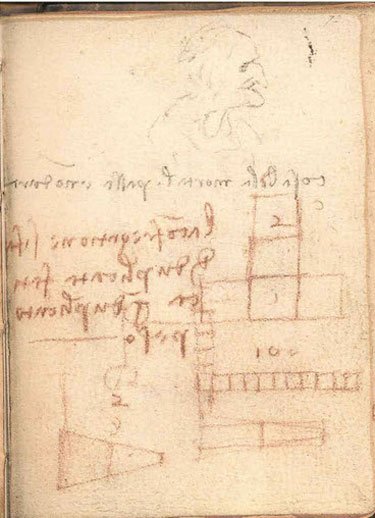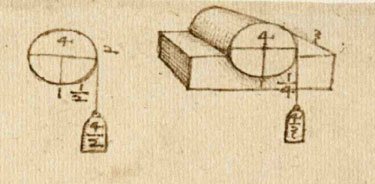Category Archive 'Physics'
06 May 2024


The following concerns a question in a physics degree exam at the University of Copenhagen: “Describe how to determine the height of a skyscraper using a barometer.”
One student replied, “You tie a long piece of string to the neck of the barometer, then lower the barometer from the roof of the skyscraper to the ground. The length of the string plus the length of the barometer will equal the height of the building.”
This highly original answer so incensed the instructor that the student was failed. The student appealed on the grounds that his answer was indisputably correct and the university appointed an independent arbiter to decide the case. The arbiter judged that answer was indeed correct, but did not display knowledge of physics. To resolve the problem it was decided to call the student in and allow him six minutes in which to provide a verbal answer, which showed at least a minimal familiarity the principles of physics.
For five minutes the student sat in silence, forehead creased in thought. The arbiter reminded him that time was running out, to which the student replied that he had several extremely relevant answers, but couldn’t make up his mind which to use.
On being advised to hurry up the student replied as follows,
“Firstly, you could take the barometer up to the roof of the skyscraper, drop it over the edge, and measure the time it takes to reach the ground. The height of the building can then be worked out from the formula H = 0.5g x t squared. But bad luck on the barometer.”
“Or if the sun is shining you could measure the height of the barometer, then set it on end and measure the length of its shadow. Then you measure the length of the skyscraper’s shadow, and thereafter it is a simple matter of proportional arithmetic to work out the height of the skyscraper.”
“But if you wanted to be highly scientific about it, you could tie a short piece of string to the barometer and swing it like a pendulum, first at ground level and then on the roof of the skyscraper. The height is worked out by the difference in the restoring force T = 2 pi sq. root (l /g).”
“Or if the skyscraper has an outside emergency staircase, it would be easier to walk up it and mark off the height of the skyscraper in barometer lengths, then add them up.”
“If you merely wanted to be boring and orthodox about it, of course, you could use the barometer to measure the air pressure on the roof of the skyscraper and on the ground, and convert the difference in millibars into meters to give the height of the building.”
“But since we are constantly being exhorted to exercise independence of mind and apply scientific methods, undoubtedly the best way would be to knock on the janitor’s door and say to him ‘If you would like a nice new barometer, I will give you this one if you tell me the height of this skyscraper’.”
The student was Niels Bohr, the only person from Denmark to win the Nobel Prize for Physics.
03 Dec 2018


Rare Historical Photographs:
The Solvay Conference, founded by the Belgian industrialist Ernest Solvay in 1912, was considered a turning point in the world of physics. Located in Brussels, the conferences were devoted to outstanding preeminent open problems in both physics and chemistry. The most famous conference was the October 1927 Fifth Solvay International Conference on Electrons and Photons, where the world’s most notable physicists met to discuss the newly formulated quantum theory. The leading figures were Albert Einstein and Niels Bohr.
Einstein, disenchanted with Heisenberg’s uncertainty principle, remarked “God does not play diceâ€. Bohr replied: “Einstein, stop telling God what to doâ€. 17 of the 29 attendees were or became Nobel Prize winners, including Marie Curie, who alone among them, had won Nobel Prizes in two separate scientific disciplines.
This conference was also the culmination of the struggle between Einstein and the scientific realists, who wanted strict rules of scientific method as laid out by Charles Peirce and Karl Popper, versus Bohr and the instrumentalists, who wanted looser rules based on outcomes. Starting at this point, the instrumentalists won, instrumentalism having been seen as the norm ever since.
10 Sep 2017

You and I were not at Caltech at the right time to hear them in person, but Richard Feynman’s famous Lectures on Physics are now available online for free.
30 May 2017


The College Fix:
‘Binary and absolute differences’ are ‘exploitative’
A feminist academic affiliated with the University of Arizona has invented a new theory of “intersectional quantum physics,†and told the world about it in a journal published by Duke University Press.
Whitney Stark argues in support of “combining intersectionality and quantum physics†to better understand “marginalized people†and to create “safer spaces†for them, in the latest issue of The Minnesota Review.
Because traditional quantum physics theory has influenced humanity’s understanding of the world, it has also helped lend credence to the ongoing regime of racism, sexism and classism that hurts minorities, Stark writes in “Assembled Bodies: Reconfiguring Quantum Identities.â€
A researcher in culture and gender studies at Utrecht University in the Netherlands, Stark also holds an appointment in women’s and gender studies at the University of Arizona through its Institute for LGBT Studies.
She is a member of the Somatechnics Research Network, hosted by UA, whose scholars “reflect on the mutual inextricability of embodiment and technology.â€
Stark identifies Newtonian physics as one of the main culprits behind oppression. “Newtonian physics,†she writes, has “separated beings†based on their “binary and absolute differences.â€
“This structural thinking of individualized separatism with binary and absolute differences as the basis for how the universe works is embedded in many structures of classification,†according to Stark.
These structures of classification, such as male/female, or living/non-living, are “hierarchical and exploitative†and are thusly “part of the apparatus that enables oppression.â€
Therefore, Stark argues in favor of combining intersectionality and quantum physics theory to fight against the imperative to classify people based on hierarchical categories.
RTWT
26 Jul 2016


University of Cambridge Research:
Scribbled notes and sketches on a page in a notebook by Leonardo da Vinci, previously dismissed as irrelevant by an art historian, have been identified as the place where he first recorded his understanding of the laws of friction.
The research by Professor Ian Hutchings, Professor of Manufacturing Engineering at the University of Cambridge and a Fellow of St John’s College, is the first detailed chronological study of Leonardo’s work on friction, and has also shown how he continued to apply his knowledge of the subject to wider work on machines over the next two decades.
It is widely known that Leonardo conducted the first systematic study of friction, which underpins the modern science of “tribologyâ€, but exactly when and how he developed these ideas has been uncertain until now.
Professor Hutchings has discovered that Leonardo’s first statement of the laws of friction is in a tiny notebook measuring just 92 mm x 63 mm. The book, which dates from 1493 and is now held in the Victoria and Albert Museum in London, contains a statement scribbled quickly in Leonardo’s characteristic “mirror writing†from right to left.
Ironically the page had already attracted interest because it also carries a sketch of an old woman in black pencil with a line below reading “cosa bella mortal passa e non duraâ€, which can be translated as “mortal beauty passes and does not lastâ€. Amid debate surrounding the significance of the quote and speculation that the sketch could represent an aged Helen of Troy, the Director of the V & A in the 1920s referred to the jottings below as “irrelevant notes and diagrams in red chalkâ€.
Professor Hutchings’s study has, however, revealed that the script and diagrams in red are of great interest to the history of tribology, marking a pivotal moment in Leonardo’s work on the subject.
The rough geometrical figures underneath Leonardo’s red notes show rows of blocks being pulled by a weight hanging over a pulley – in exactly the same kind of experiment students might do today to demonstrate the laws of friction.
Professor Hutchings said: “The sketches and text show Leonardo understood the fundamentals of friction in 1493. He knew that the force of friction acting between two sliding surfaces is proportional to the load pressing the surfaces together and that friction is independent of the apparent area of contact between the two surfaces. These are the ‘laws of friction’ that we nowadays usually credit to a French scientist, Guillaume Amontons, working two hundred years later.â€

——————————–
Paper: Leonardo da Vinci’s Studies of Friction
Abstract:
Based on a detailed study of Leonardo da Vinci׳s notebooks, this review examines the development of his understanding of the laws of friction and their application. His work on friction originated in studies of the rotational resistance of axles and the mechanics of screw threads. He pursued the topic for more than 20 years, incorporating his empirical knowledge of friction into models for several mechanical systems. Diagrams which have been assumed to represent his experimental apparatus are misleading, but his work was undoubtedly based on experimental measurements and probably largely involved lubricated contacts. Although his work had no influence on the development of the subject over the succeeding centuries, Leonardo da Vinci holds a unique position as a pioneer in tribology.
31 Dec 2014

Caltech has all three volumes available right now on the Internet for free. Very cool stuff.
Don’t let’s hear any more liberal whining about the unavailability of educational opportunity in this country.
11 Mar 2013


Denise Milani
68-year-old Particle Physicist Paul Frampton was divorced and in the market for a new wife, hopefully a woman “between the ages of 18 and 35, which Frampton understood to be the period when women are most fertile.”
And what do you know? The lucky guy had only to log onto the Internet and start playing with one dating site, and he ran into the internationally-famous-for-her-enormous-upper-endowment supermodel Denise Milani. The couple exchanged texts and photos, and fell madly in love, though the apparently-shy model kept refusing to speak to him on the phone.
Finally, Denise Milani agreed to meet the professor in person… in La Paz, Bolivia. Alas! when he got to Bolivia, the lovely lady had been unexpectedly called away to another photo shoot in Brussels, and would he do her a favor and bring her a suitcase she’d left behind in La Paz?
Peter Frampton was arrested in Buenos Aires and received a 4 year 10 month sentence for smuggling cocaine. The real Denise Milani could not be reached for comment.
Maxine Swann tells the whole sad story in the New York Times Magazine.
Hat tip to Glenn Reynolds.
—————————————–
Denise Milani’s breasts web-site.
26 Feb 2013

Her physicist boyfriend Brendan proposed by submitting this paper to her (a fellow physicist).
/div>

Feeds
|
















